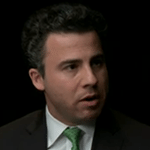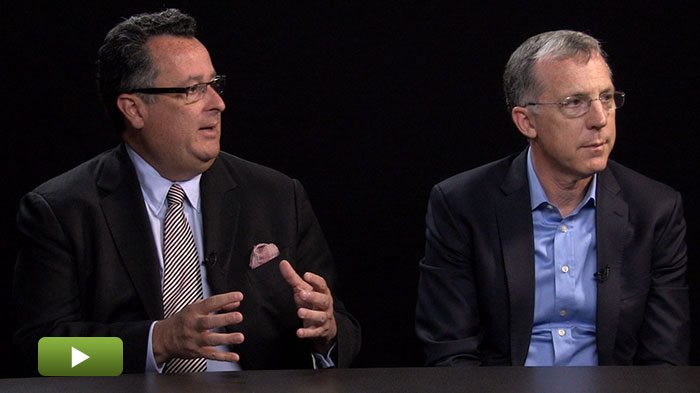Mexican Energy, the PE Opportunity
Hear from GP experts, who have invested in Mexican energy platforms, about what lies ahead for the Mexican energy market and the role that private capital investors will play in this exciting opportunity.
Transcript Download Transcript
Unlocking the Mexican Potential
Groundbreaking regulatory changes in Mexico are opening up the market for investment in the country’s booming energy market.
By Ainslie Chandler
To get a sense of the excitement surrounding the opportunity now presented by Mexican energy, have a conversation with one the few people to have actually completed a private equity deal in the space.
Consider, for example, a story told by George Osorio, managing partner of Conduit Capital Partners, an energy-specialist private equity firm which completed a hydroelectric investment in Mexico in 2002. The difficulty of that project convinced Osorio that investments in Mexico would always be characterized by complexity and pain. He relates encounters he had in the early 2000s with Mexican regulatory officials: “We would have discussions with [government entities] CRE and CFE. . . and we were trying to start the conversation about opening up the sector, opening it up for private investment, and potentially privatization. We would literally be laughed at. They said that would never happen in Mexico: ‘It’s too nationalistic. This is part of our national resource, and we don’t intend to ever open it up.’ Fifteen years later, look where we are – it’s happening.”
What is happening in Mexico should indeed energizing to private investors around the world as well as to domestic advocates for Mexican growth. Most-discussed are the amendments to the Mexican Constitution enacted by lawmakers late in 2013 that create several models for foreign investment in Mexican hydrocarbon. But Mexico’s domestic economy is also growing such that the demand for energy from across the border will also spell investment opportunity.
The scope for investment is huge, with capital expenditure across the sector at potentially $350 billion, according to figures from the Binational Center Library and Texas A&M International University.
Oscar Lopez-Velarde, tax partner at EY’s Latin American Business Center, describes the reforms as a “game changer” and a huge opportunity for those looking to invest in upstream, midstream and downstream opportunities. The underdeveloped pipeline network through and to Mexico is just one area begging for outside investment, while there is also massive need for new refineries.
In addition, already a number of private equity firms are starting to create joint ventures with Mexican partners to bid on tenders for exploration and production projects. Lopez says Mexico does not yet have the framework for Master Limited Partnership investment, but the government and tax authorities are working on a similar framework to attract more capital. “A year ago, when the constitutional discussion was started in Congress, nobody believed that this was going to come into place. Now we have pretty much all the framework ready in Congress. The Senate has started to approve the power laws, so it is happening.”
Osorio says he is optimistic that the benefits of the reform will be obvious enough to policymakers that the reforms are likely to remain in place, whether or not there is a change of government. He believes that Mexico will avoid some of the “growing pains” of countries like Argentina and Venezuela because of its strong ties with the U.S. and Canada. He says that while the reforms do not promise “straight out privatization” yet, they do seem poised to deliver “creeping privatization.”
Commenting on the Comision Federal De Electricidad (CFE, the state-owned power monopoly), Osorio notes that legal changes will allow producers to supply power to companies or municipalities in deals over which the CFE will have limited control, a change he says is “dramatic” and “profound.”
The suite of reforms are “the best thing that could happen, and I’m just not saying for Mexico, for the region including the U.S., including its neighbors, including all of South America,” says Osorio. “This has far reaching effects, and I don’t think people appreciate it.”
One group that definitely appreciates the Mexican opportunity is global investment firm Partners Group. Based in Zurich, Partners Group had been quite interested in the North American oil and gas market but was hesitant about getting involved in the U.S. space prowled by so many competitive MLPs, according to Maximiliano Del Vento, a vice president at the firm.
Instead, Partners Group looked further south, and struck a deal with Fermaca, Mexico’s second-largest gas pipeline company. The firm invested an initial $750 million into Fermaca. Noting Mexico’s share of the fertile Eagle Ford shale formation, Del Vento says that Fermaca will be transporting “the same resources, the same shale gas. . . The only difference is that there is a line on the floor that separates Mexico from Texas. So we’ve found this amazing asset and incredible management team and we were able to work with management on a transaction that makes sense for everybody.”
Del Vento says his firm’s stake in Fermaca positions it well to enjoy an expected wave of growth as Mexico seeks to increase its energy infrastructure. “We think there is a huge opportunity for the company to participate in the tenders that are coming to market,” he says. “There is a multi-billion dollar opportunity in the midstream to build the infrastructure in Mexico. If you look at the government plan, they expect to auction approximately 10,000 kilometers of traditional natural gas pipelines over the next few years.”
Del Vento further estimates that the legal reforms could help lift Mexican GDP between 1 percent and 1.5 percent, depending on how the laws are implemented.
“We think that things [will] be implemented well and in a very market-friendly way,” he says, given the aim of the laws is to attract more foreign direct investment, create jobs, improve productivity and increase living standards.
EY’s Lopez agrees that the scope of the opportunity is large, and stresses that there are opportunities for different sized players as well as different types of players: “You will find the big projects, the huge pipelines, but also smaller pipelines already being built. If you go to the offshore, we know that the majors will probably get the first deep sea water projects. We are also seeing Mexican companies operating on the onshore business. We are putting in place a couple of companies funded by private equity that are planning to do investments that range between $500 million and $1 billion. . . We see room for everybody, honestly. There will be room for the big guys, for the midsize projects and also for a lot of the small things that needs to be built in Mexico.”
Osorio, a pan-Latin American investor, is enthused about Mexico as a destination for his firm’s investment activities. “Mexico is actually our number one target by far out of all the countries in the region as a whole,” he says.
But as someone who has completed three deals in Mexico, Osorio cautions that energy projects in particular need to begin with community buy-in – a cultural factor that the reforms do not negate. “The thing I would say about Mexico investing is that, unlike any other country in Latin America, development means you talk to the community first,” he says. “Forget the feasibility studies, forget your energy research, forget your legal structures. You need to talk to the community first.”
Competition
International investors are indeed coming to Mexico and bringing with them an inevitable dynamic in an attractive market – competition. Osorio says that as the government’s stranglehold on the markets loosens, the number of participants investing in the sector, including financial institutions, pension funds and others from around the world, will increase. But he sees this as a positive development for established private equity investors in that exit markets will open up. “When we first invested we didn’t know whether we were going to exit or not. With so many participants going into an investment grade country it just changes everything.”
Osorio says a big issue for new entrants will be finding management teams with deep expertise, given the lack of private investment in the sector up until now.
Del Vento adds private equity firm moves are similar to how they operated in the real estate boom of the 1990s, deploying both Mexican and foreign management to make sure they have the expertise needed to operate in the sector.
The energy reforms are inspiring investment in other industries expected to benefit from the growth of Mexican energy. According to EY’s Lopez, “We are also starting to see a lot of private equity firms investing in construction companies, or in companies that would be rendering services just as Mexican drillers. We’re starting to see it in Mexican shipping companies. . . all over the areas that are being opened for private investors. It’s a very positive outcome.”
Much remains to be seen in the way the reforms are implemented in Mexico, but the savviest energy investors in the private equity market seem to agree – the changes in Mexico are real, and the moves to participate in a new market opportunity are emphatic.




